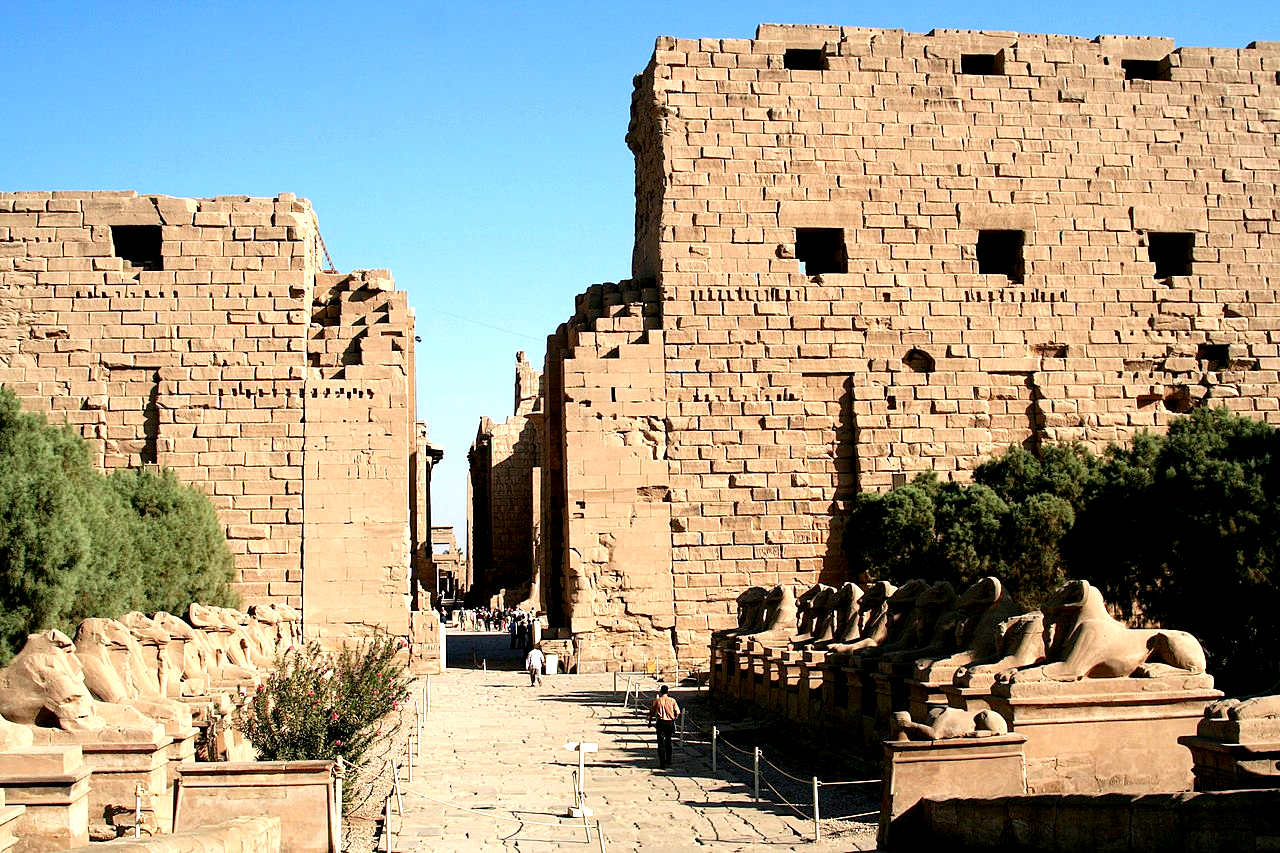
Karnak
Thebes, known to the ancient Egyptians as Waset, was an ancient Egyptian city located along the Nile about 800 kilometers (500 mi) south of the Mediterranean. Its ruins lie within the modern Egyptian city of Luxor. Thebes was the main city of the fourth Upper Egyptian nome (Sceptre nome) and was the capital of Egypt for long periods during the Middle Kingdom and New Kingdom eras. It was close to Nubia and the Eastern Desert, with its valuable mineral resources and trade routes. It was a religious center and the most venerated city during many periods of ancient Egyptian history. The site of Thebes includes areas on both the eastern bank of the Nile, where the temples of Karnak and Luxor stand and where the city was situated; and the western bank, where a necropolis of large private and royal cemeteries and funerary complexes can be found. In 1979, the ruins of ancient Thebes were classified by
UNESCO as a
World Heritage
Site.
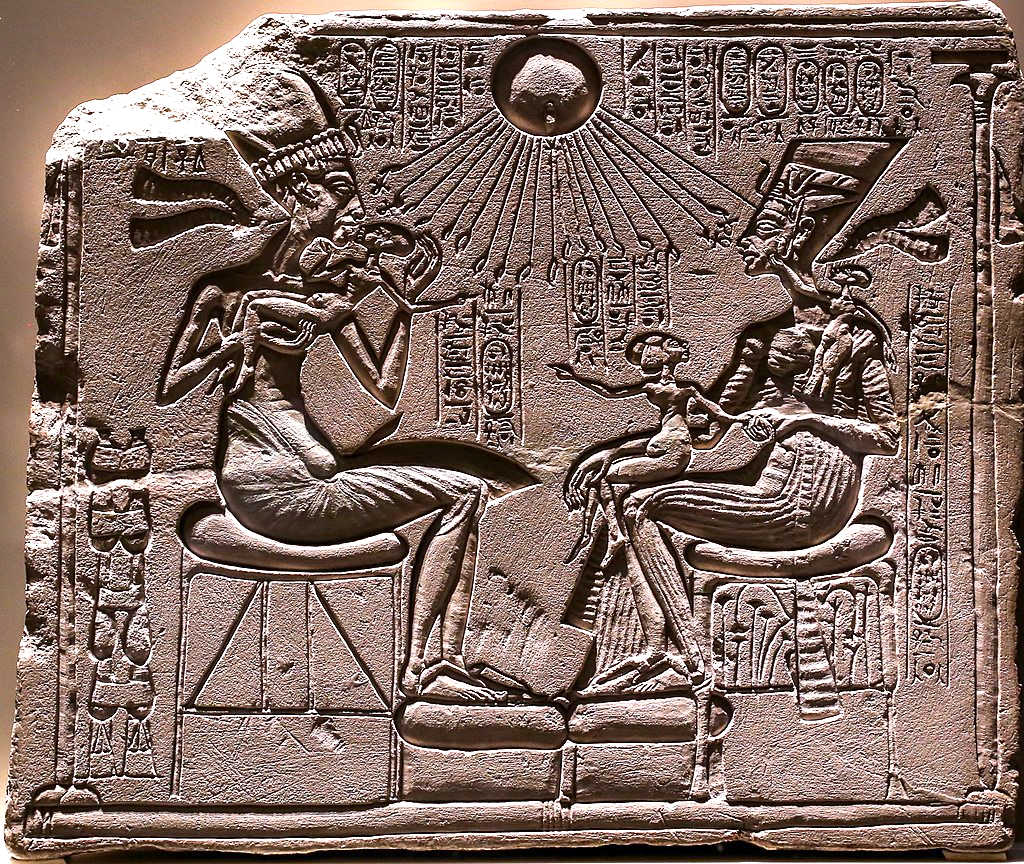
A
stone relief showing Akhenaten and his wife Nefertiti with
three of their daughters
GEOGRAPHY
Thebes was located along the banks of the Nile River in the middle part of Upper Egypt about 800 km south of the Delta. It was built largely on the alluvial plains of the Nile Valley, which follows a great bend of the
Nile. As a natural consequence, the city was laid in a northeast–southwest axis parallel to the contemporary river channel. Thebes had an area of 93 km2 (36 sq mi), which included parts of the Theban Hills in the west that culminates at the sacred 420-meter (1,378-foot) al-Qurn. In the east lies the mountainous Eastern Desert with its wadis draining into the valley. Significant among these wadis is Wadi Hammamat near Thebes. It was used as an overland trade route going to the Red Sea coast. Wadi Hammamat was the primary trade route linking Egypt to the Red Sea since Pre-Dynastic times. Uruk civilization was transmitted to Egypt along this corridor.
It is the likely that Thinis, the capital of the First Dynasty, was located in the same region as Thebes for this reason. Both cities were at a crossroad region in Upper Egypt between the Nile in the north to south direction and Saharan caravan routes connecting to Red Sea maritime routes via Wadi Hammamat in the East West direction. The Wadi el-Hol is also located near Thebes; this valley connected Thebes to an oasis on the Western Desert. It is notable for the first Proto-Sinatic alphabet inscription, which appeared shortly after Thebes became the capital of Egypt.
Nearby towns in the fourth Upper Egyptian nome were Per-Hathor, Madu, Djerty, Iuny, Sumenu and Imiotru.
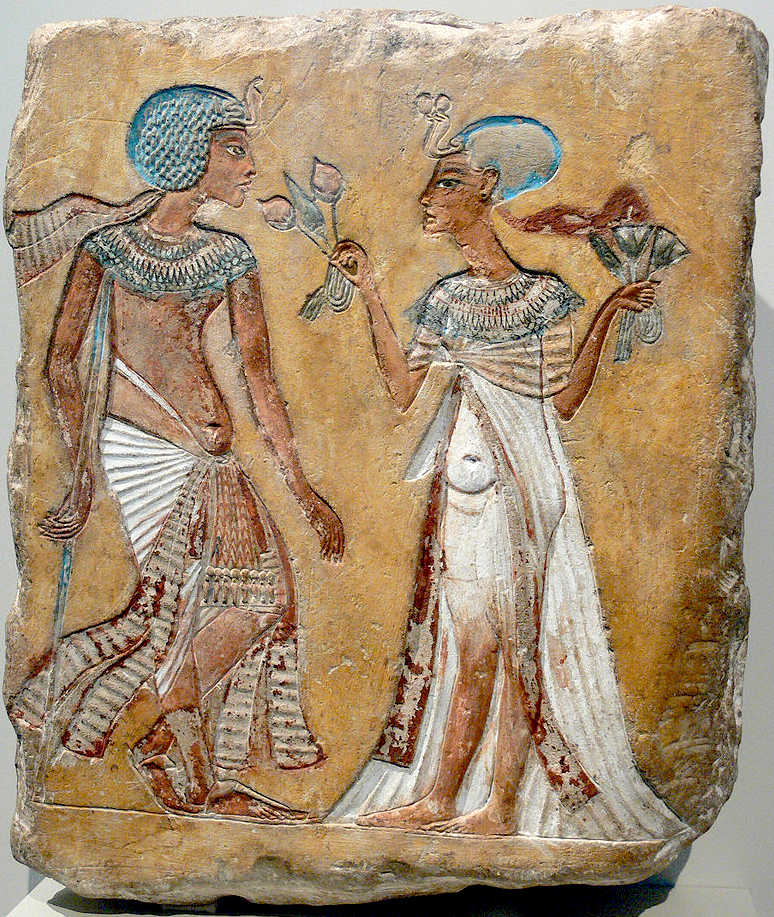
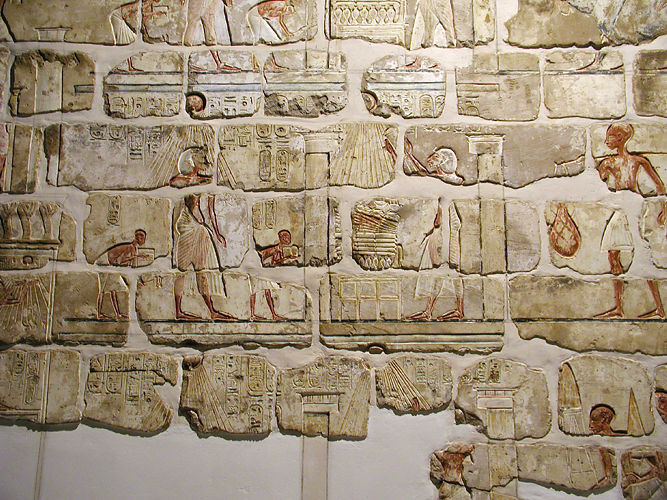
Temple
tablet relief's called talatats
NEW KINGDOM
Ahmose I founded a new age for a unified Egypt with Thebes as its capital. The city remained as capital during most of the 18th Dynasty (New Kingdom). It also became the center for a newly established professional civil service, where there was a greater demand for scribes and the literate as the royal archives began to fill with accounts and reports. At the city the favored few of Nubia were reeducated with Egyptian culture, to serve as administrators of the colony.
With Egypt stabilized again, religion and religious centers flourished and none more so than Thebes. For instance, Amenhotep III poured much of his vast wealth from foreign tribute into the temples of
Amun. The Theban god Amun became a principal state deity and every building project sought to outdo the last in proclaiming the glory of Amun and the pharaohs themselves. Thutmose I (reigned 1506–1493 BC) began the first great expansion of the
Karnak
temple. After this, colossal enlargements of the temple became the norm throughout the New Kingdom.
Queen Hatshepsut (reigned 1479–1458 BC) helped the Theban economy flourish by renewing trade networks, primarily the Red Sea trade between Thebes' Red Sea port of Al-Qusayr, Elat and the land of Punt. Her successor Thutmose III brought to Thebes a great deal of his war booty that originated from as far away as Mittani. The 18th Dynasty reached its peak during his great-grandson Amenhotep III's reign (1388–1350 BC). Aside from embellishing the temples of Amun, Amenhotep increased construction in Thebes to unprecedented levels. On the west bank, he built the enormous mortuary temple and the equally massive Malkata palace-city, which fronted a 364-hectare artificial lake. In the city proper he built the Luxor temple and the Avenue of the Sphinxes leading to Karnak.
For a brief period in the reign of Amenhotep III's son Akhenaten (1351–1334 BC), Thebes fell on hard times; the city was abandoned by the court, and the worship of Amun was proscribed. The capital was moved to the new city of Akhetaten (Amarna in modern Egypt), midway between Thebes and Memphis. After his death, his son
Tutankhamun returned the capital to Memphis, but renewed building projects at Thebes produced even more glorious temples and shrines.
With the 19th Dynasty the seat of government moved to the Delta. Thebes maintained its revenues and prestige through the reigns of Seti I (1290–1279 BC) and Ramesses II (1279–1213 BC), who still resided for part of every year in Thebes. Ramesses II carried out extensive building projects in the city, such as statues and obelisks, the third enclosure wall of Karnak temple, additions to the Luxor temple, and the Ramesseum, his grand mortuary temple. The constructions were bankrolled by the large granaries (built around the Ramesseum) that concentrated the taxes collected from Upper Egypt; and by the gold from expeditions to Nubia and the Eastern Desert. During Ramesses' long 66-year reign, Egypt and Thebes reached an overwhelming state of prosperity that equaled or even surpassed the earlier peak under Amenhotep III.
The city continued to be well kept in the early 20th Dynasty. The Great Harris Papyrus states that Ramesses III (reigned 1187–56) donated 86,486 slaves and vast estates to the temples of Amun. Ramesses III received tributes from all subject peoples including the Sea Peoples and Meshwesh Libyans. The whole of Egypt was experiencing financial problems, however, exemplified in the events at Thebes' village of Deir el-Medina. In the 25th year of his reign, workers in Deir el-Medina began striking for pay and there arose a general unrest of all social classes. Subsequently, an unsuccessful Harem conspiracy led to the executions of many conspirators, including Theban officials and women.
Under the later Ramessids, Thebes began to decline as the government fell into grave economic difficulties. During the reign of Ramesses IX (1129–1111 BC), about 1114
BC, a series of investigations into the plundering of royal tombs in the necropolis of western Thebes uncovered proof of corruption in high places, following an accusation made by the mayor of the east bank against his colleague on the west. The plundered royal mummies were moved from place to place and at last deposited by the priests of Amun in a tomb-shaft in Deir el-Bahri and in the tomb of Amenhotep II. (The finding of these two hiding places in 1881 and 1898, respectively, was one of the great events of modern archaeological discovery.) Such maladministration in Thebes led to unrest.
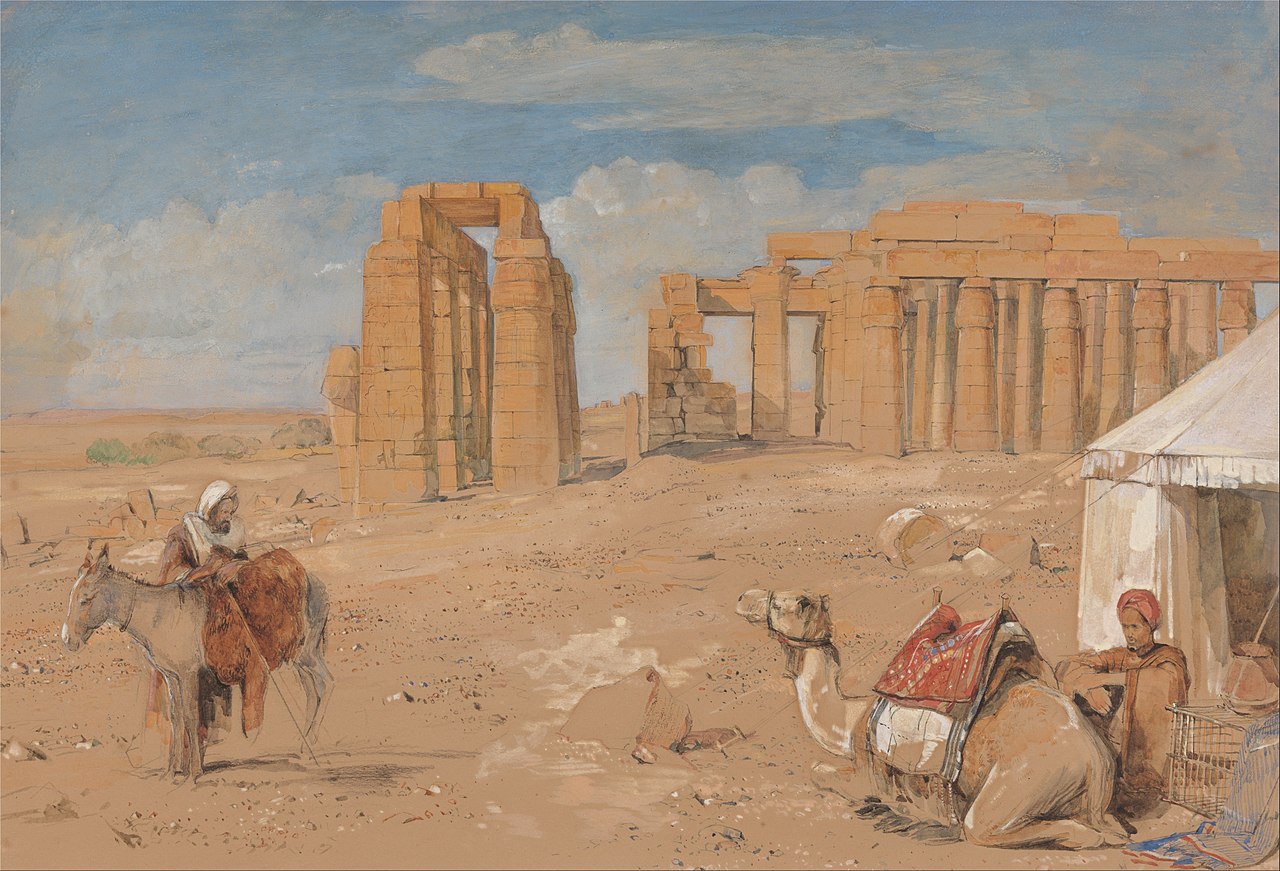
GRAECO-ROMAN PERIOD
The good relationship of the Thebans with the central power in the North ended when the native Egyptian pharaohs were finally replaced by Greeks, led by Alexander the Great. He visited Thebes during a celebration of the Opet Festival. In spite of his welcoming visit, Thebes became a center for dissent. Towards the end of the third century BC, Hugronaphor (Horwennefer), possibly of Nubian origin, led a revolt against the Ptolemies in Upper Egypt. His successor, Ankhmakis, held large parts of Upper Egypt until 185 BC. This revolt was supported by the Theban priesthood. After the suppression of the revolt in 185 BC, Ptolemy V, in need of the support of the priesthood, pardoned them.
Half a century later the Thebans rose again, elevating a certain Harsiesi to the throne in 132 BC. Harsiesi, having helped himself to the funds of the royal bank at Thebes, fled the following year. In 91 BC, another revolt broke out. In the following years, Thebes was subdued, and the city turned into rubble.
During the Roman occupation (30 BC–641 AD), the remaining communities clustered around the pylon of the Luxor temple. Thebes became part of the Roman province of Thebais, which later split into Thebais Superior, centered at the city, and Thebais Inferior, centered at Ptolemais Hermiou. A Roman legion was headquartered in Luxor temple at the time of
Roman campaigns in Nubia. Building did not come to an abrupt stop, but the city continued to decline. In the first century AD, Strabo described Thebes as having been relegated to a mere village.
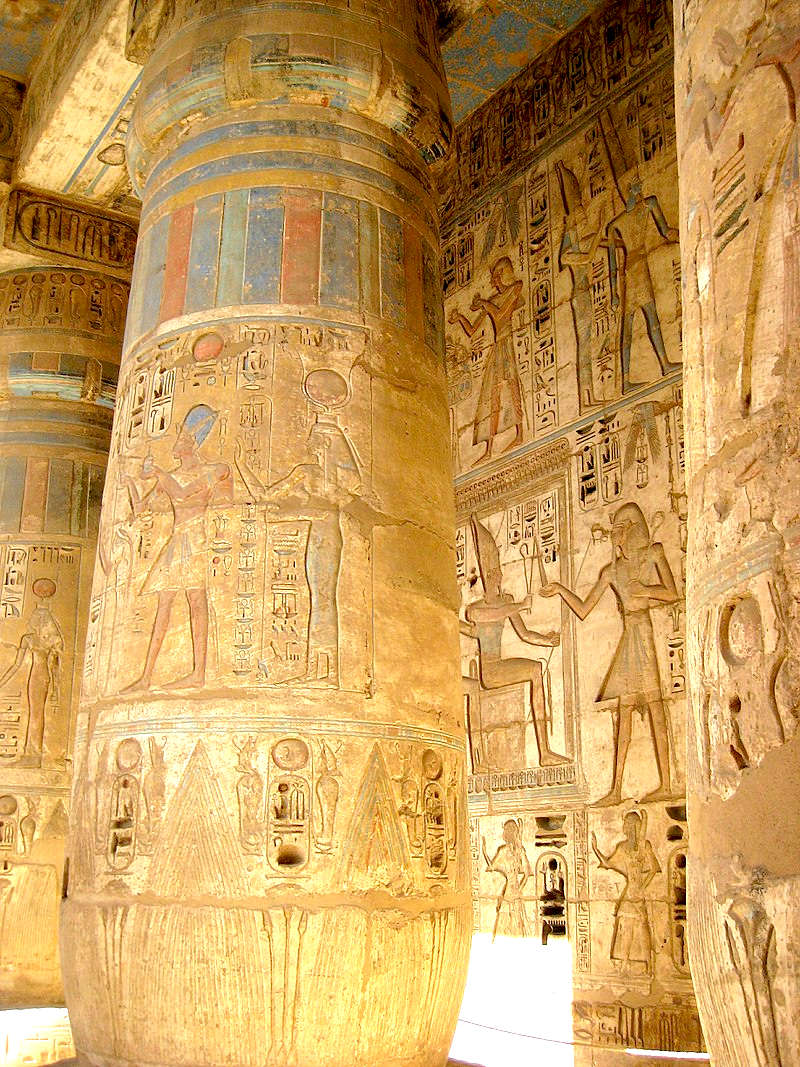
MAJOR SITES
Great Temple of Amun at Karnak (Ancient Egyptian Ta-opet). Still the second largest religious building ever built, it is the main house of worship for Amun, Thebes' patron deity, and the residence of the powerful Amun priesthood. What differentiated it from the many temples of Egypt is the length of time it was built over (more than 2,000 years, starting in the Middle Kingdom). The main features of this temple are its ten large pylons, the Great Hypostyle Hall, a sacred lake, sub-temples, numerous shrines and multiple obelisks. It was the most important temple for a majority of Ancient Egyptian history.
Luxor Temple (Ipet resyt). Unlike the other temples in Thebes, it is not dedicated to a cult god or a deified version of the king in death. Instead, it is dedicated to the rejuvenation of kingship; it may have been where many of the pharaohs of Egypt were crowned. It is a centerpiece of the "Opet Festival", where the sacred barque of the Theban Triad travels from Karnak to Luxor temple highlighting the godly significance of the pharaoh's re-coronation .
The two great temples—Luxor Temple and Karnak—and the Valley of the Kings and the Valley of the Queens are among the greatest achievements of ancient Egypt.
In popular culture, Thebes is a setting in the films The Mummy (1999) and The Mummy Returns (2001). It is said to be the "Land of the Living". (In real history, there was no such name given to it.) The films feature scenes taking place in ancient Egypt in its prime, which affect the story in the modern setting some 3000 years later.
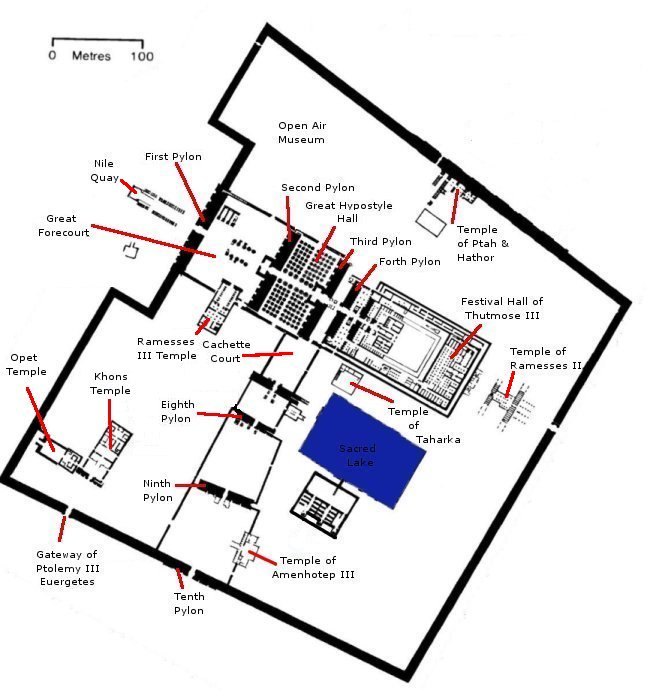
Temples
at Thebes
REFERENCE
https://www.
CLEOPATRA
THE MUMMY
'Cleopatra
- The Mummy' is an original story in the John Storm franchise (for which a
draft
script is published for studios, producers and directors). The
John Storm
franchise is a series of
ocean awareness adventures, featuring the incredible solar
powered trimaran: Elizabeth
Swann. Filming in and around Egypt could boost the Orange
Economy.